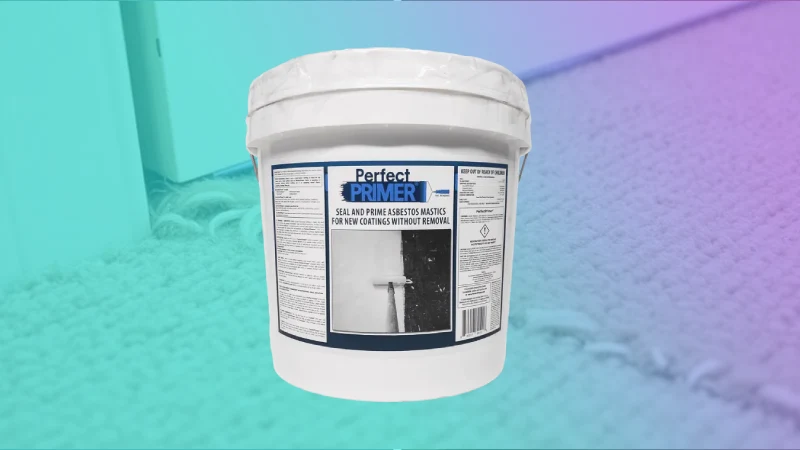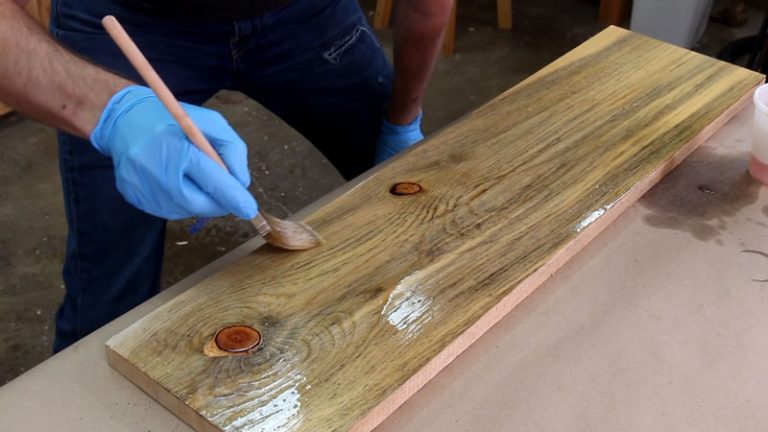Exploring Alternatives to PerfectPrimer for Surface Preparation: Options and Insights
When preparing a surface for painting or other projects, primer plays a vital role. PerfectPrimer is a popular choice, but alternatives might work better for specific projects. Exploring these alternatives allows homeowners and contractors to choose the right solution for their needs.
This blog will cover various alternatives to PerfectPrimer, their uses, benefits, and how they compare. Whether you need better adhesion, mold resistance, or easier application, these options can save time and money. Read on to discover the best solutions for your next surface preparation project.
You'll Learn About
Understanding the Role of a Primer in Surface Preparation
Primers are essential when prepping a surface for paint or other finishes. They create a barrier that promotes better adhesion, blocks stains, and ensures a smooth finish. Knowing how they function helps you select the best primer alternative.

What Does a Primer Do?
A primer prepares surfaces by creating a bond between the surface and paint. It seals porous surfaces, fills cracks, and prevents stains from bleeding through. Without a primer, your paint may peel, bubble, or fail to adhere properly.
Why Choose an Alternative to PerfectPrimer?
Although PerfectPrimer is well-known, it might not always fit the unique demands of a project. Alternatives can address specialized needs like moisture resistance, fast drying, or being eco-friendly. These options give you flexibility and customization for different projects.
Key Benefits of Using Alternatives to PerfectPrimer
Choosing a primer alternative offers several benefits:
- Cost-Effectiveness: Some alternatives are less expensive while being just as effective.
- Specialized Use: Some are designed for mold resistance, metal surfaces, or outdoor areas.
- Eco-Friendly Options: Low-VOC (volatile organic compounds) or water-based alternatives are safer for the environment.
- Ease of Application: Some alternatives offer faster drying times and simpler application.
Top Alternatives to PerfectPrimer and Their Uses
Several primer options can effectively replace or complement PerfectPrimer. These alternatives vary in their composition, purpose, and ideal applications. Let’s explore some of the most common alternatives available.
1. Zinsser Bulls Eye 1-2-3 Primer
This oil-based and water-based primer is highly versatile for most surfaces. Zinsser Bulls Eye 1-2-3 is known for excellent stain-blocking capabilities and smooth application.
Key Features:
- Stain blocking
- Adhesion to a variety of surfaces
- Water-based for indoor use
Ideal For:
- Walls with stains, smoke, or water damage
- Interior surface preparation
- Quick-drying projects
Zinsser Bulls Eye 1-2-3 is a reliable and trusted alternative to PerfectPrimer with similar benefits.
2. KILZ Premium Primer
KILZ Premium Primer offers a high-performance solution for surface preparation. This primer excels in blocking stains, adhering to surfaces, and preventing mildew growth.
Key Features:
- Excellent stain-blocking properties
- Mold and mildew resistance
- High adhesion for uneven surfaces
Ideal For:
- Bathrooms and kitchens where moisture exposure is common
- Stained drywall and surfaces
- Renovation projects requiring enhanced durability
KILZ Premium is a solid choice if you need a primer that combats moisture and stains.
3. Benjamin Moore Fresh Start Primer
Benjamin Moore’s Fresh Start is another high-quality option that excels in sealing and preparing surfaces. This versatile primer works for a variety of substrates and finishes.
Key Features:
- Superior adhesion properties
- Resistant to peeling and cracking
- Excellent coverage for paint application
Ideal For:
- Painting over previously painted surfaces
- Repairing worn or damaged walls
- Exterior or interior projects
Benjamin Moore Fresh Start offers strength and versatility, especially for difficult projects.
4. Rust-Oleum Universal Bonding Primer
Rust-Oleum’s Universal Bonding Primer is perfect for surfaces that are hard to prepare with traditional primers. It adheres to almost any surface type, making it an ideal choice for metal, glossy surfaces, and plastics.
Key Features:
- Adheres to glossy surfaces and metal
- Durable and long-lasting
- Easy application with a brush or roller
Ideal For:
- Metal surfaces and high-gloss areas
- Projects with unusual or non-porous surfaces
- DIY projects requiring a strong bond
Rust-Oleum Universal Bonding Primer offers versatility for unusual surfaces that PerfectPrimer may not adhere to well.
5. Sherwin-Williams Multi-Purpose Latex Primer
Sherwin-Williams’ Multi-Purpose Latex Primer offers versatility, ease of use, and eco-friendly benefits. This low-VOC alternative ensures a safer application for indoor and residential use.
Key Features:
- Water-based formula
- Low-VOC, eco-friendly option
- Great for drywall and wall preparation
Ideal For:
- Indoor and residential painting projects
- Homes with eco-conscious or health-conscious homeowners
- Drywall preparation and general wall repairs
Sherwin-Williams Multi-Purpose Latex Primer provides affordability and safety for eco-conscious users.
6. Eco-Friendly Water-Based Primers
Many homeowners and contractors are shifting toward environmentally friendly alternatives. Water-based primers are low-VOC and safer for people with respiratory sensitivities.
Key Features:
- Low-VOC and odorless
- Non-toxic and environmentally safe
- Easy clean-up with soap and water
Examples of Eco-Friendly Options:
- Behr Premium Plus Primer: Low-VOC primer ideal for residential use.
- Valspar Water-Based Primer: Resistant to mildew and promotes excellent coverage.
Water-based options are a fantastic choice for projects prioritizing health and environmental concerns.
7. Adhesion Promoters as Alternatives
In some cases, traditional primers aren’t necessary if you use an adhesion promoter. Adhesion promoters improve the bond between paint and the substrate without requiring extensive preparation.
Key Features:
- Improves paint adhesion
- Useful for slick surfaces
- Quick-drying and easy to apply
Common Products:
- 3M Adhesion Promoter: Works well on metal and plastic surfaces.
- PPG Industries Adhesion Promoter: Perfect for hard-to-bond areas.
Adhesion promoters can save time on small projects by eliminating the need for traditional primers.
Comparing Alternatives to PerfectPrimer
Choosing the right primer alternative can feel overwhelming. The following comparison table helps outline the most common options and their key features.
| Primer Type | Key Features | Best Use Case |
|---|---|---|
| Zinsser Bulls Eye 1-2-3 | Stain blocking, water-based | Interior surfaces and stain blocking |
| KILZ Premium Primer | Mold resistance, high adhesion | Kitchens, bathrooms, and damaged walls |
| Benjamin Moore Fresh Start Primer | Superior adhesion, smooth finish | Exterior and interior repainting |
| Rust-Oleum Universal Bonding Primer | Adheres to metal/glossy surfaces | Non-porous surfaces like metal or plastic |
| Sherwin-Williams Multi-Purpose Latex Primer | Low-VOC, water-based formula | Eco-friendly indoor use |
This table can help simplify the selection process by outlining features and common uses.
How to Use PerfectPrimer
Preparing the Substrate Surface Before Applying PerfectPrimer
The first step is preparing the substrate surface properly before application. Lightly sand the surface using a #100 Grit screen to remove impurities. This ensures better adhesion by creating a slightly roughened texture for the primer to adhere to.
After sanding, clean the surface thoroughly with acetone or denatured alcohol. This removes any contaminants like dust, dirt, or oils that could affect adhesion. Properly cleaning the surface will ensure the PerfectPrimer bonds securely for long-lasting results.
If over hard mastics, wash the area with warm water. Use a de-greasing solution or dishwashing soap with a deck brush. This will remove any residual oils or dirt, preparing the surface for a proper bond. One primers don’t work on all surfaces.
Applying PerfectPrimer: The First Two Coats
Once the substrate is prepped, you can apply the first two coats of PerfectPrimer. Ensure the surface is visibly dry after cleaning before starting. Apply the first thin coat evenly using a suitable roller or brush for smooth coverage.
Allow the first coat to dry completely before applying the second coat. This step ensures that the primer adheres properly and creates a strong foundation. Avoid applying coats too thick, as thin coats offer better adhesion and dry faster.
The two coats should be applied in smooth, even motions. Pay attention to areas with intricate textures or corners to ensure complete coverage. These coats will provide the proper adhesion for any additional coatings or layers applied afterward.
Special Instructions for Hard Mastic Areas
If working over hard mastics, additional preparation may be necessary. First, use warm water mixed with a de-greasing solution or dishwashing soap to clean the mastic. A deck brush is ideal for scrubbing the surface thoroughly and ensuring proper cleaning.
Once the area has been scrubbed and visibly dry, apply the two thin coats of PerfectPrimer. The goal is to ensure that all contaminants are gone, and the mastic is ready for the primer’s application. Proper preparation prevents weak spots and ensures lasting adhesion.
Ensure you work in manageable sections when addressing areas with mastic. This prevents the cleaning or primer application from interfering with the drying process. This careful approach guarantees a strong and uniform finish.
Tools and Application Tips for PerfectPrimer
Using the correct tools can make the application process much easier. A high-quality roller or brush will ensure the PerfectPrimer is applied evenly. Avoid overloading your applicator, as excess primer can lead to pooling or uneven coverage.
Work methodically in sections to ensure no areas are missed. This also allows the primer to dry uniformly and adhere securely. Always follow the manufacturer’s instructions for tools and application techniques to ensure optimal performance.
If necessary, apply the primer using cross-hatching to ensure even distribution. This helps cover any textured areas or surface irregularities. This technique ensures the PerfectPrimer adheres completely to the surface for excellent results.
Drying and Curing Between Coats
Allow each coat of PerfectPrimer to dry completely before proceeding. This allows the primer to adhere properly to the substrate surface without interference. Drying time will vary depending on temperature, humidity, and application conditions, so monitor the environment.
Once the first coat is applied and dry, proceed with the second thin coat. Avoid rushing this step, as overlapping wet primer can lead to imperfections. A thin, even application ensures that the surface is ready for any subsequent layers.
The drying and curing process ensures that PerfectPrimer bonds securely to the surface. This provides a strong foundation for paint or other coatings applied afterward. If you notice any unevenness or pooling, lightly sand the area and reapply primer as necessary.
Maintenance and Final Tips for Best Results
After applying two coats of PerfectPrimer, ensure the substrate is protected from contaminants. Avoid exposing the surface to moisture or debris until the primer has fully cured. A clean surface ensures that the primer maintains its strong bond and effectiveness.
Regularly inspect the primed area to ensure no peeling or damage occurs. If needed, reapply the primer to maintain a strong surface for additional coatings. This simple maintenance ensures your project remains strong and visually appealing for years.
Always work in well-ventilated areas to ensure proper drying and reduce fumes. Proper ventilation allows the PerfectPrimer to cure evenly without air circulation interference. Following these tips will lead to a professional finish every time.
FAQs About Alternatives to PerfectPrimer
Q: Can I use these alternatives for exterior projects?
Yes, many alternatives like KILZ and Zinsser are excellent for exterior projects.
Q: Do eco-friendly primers perform the same as traditional options?
Yes, water-based eco-friendly primers provide effective adhesion and stain resistance.
Q: What’s the biggest advantage of Rust-Oleum’s bonding primer?
Rust-Oleum’s bonding primer adheres to virtually all non-porous surfaces.
Final Thoughts
Selecting the right alternative to PerfectPrimer depends on your unique needs and project. Each option offers different advantages, such as eco-friendliness, stain resistance, or superior adhesion. With these insights, you’ll confidently find the best solution for any surface preparation needs.

